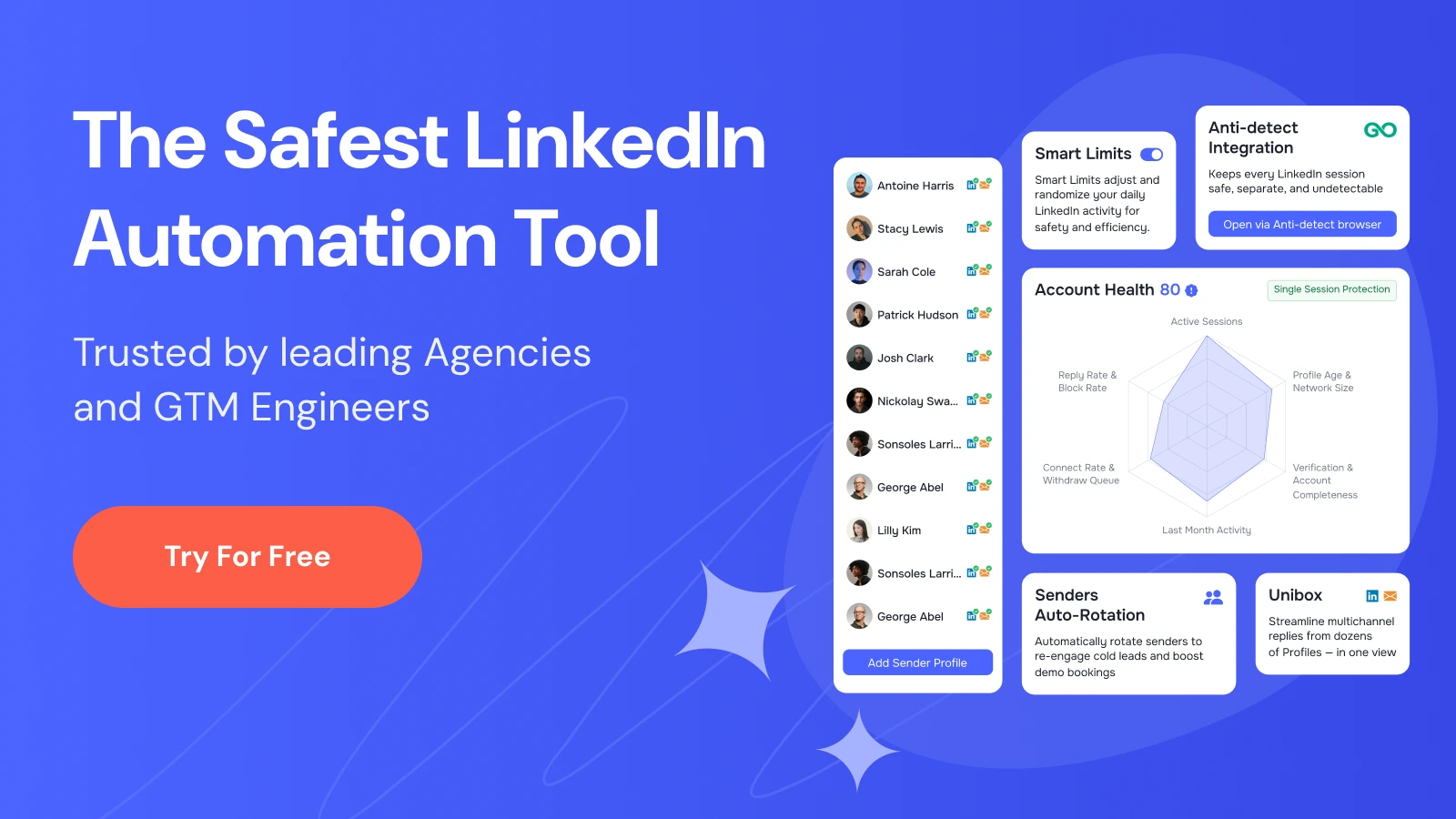Did you know that most LinkedIn users can't visually distinguish between real profiles and AI-generated deepfakes, making your accounts prime targets for sophisticated scams? In this article, we'll explore key signs of suspicious activity, proven detection methods, and best practices to safeguard your profiles — especially vital for managing thousands of client accounts in profile rental services. Drawing from expert insights and recent data, you'll gain actionable strategies to monitor anomalies and maintain security.
Understanding Suspicious LinkedIn Account Activity
Suspicious LinkedIn account activity often stems from fake or compromised profiles used for scams, phishing, or social engineering. According to LinkedIn's own research, advances in AI have led to a rise in deepfake profiles, where synthetic images fool even vigilant users LinkedIn Engineering Blog on Deepfakes. This is particularly risky for co-founders managing profile rental services, as anomalies can lead to bans, data breaches, or lost client trust.
Key statistics highlight the threat: Cybersecurity firm Darktrace reports that LinkedIn is a common vector for targeted phishing, with attackers using it for reconnaissance before escalating to email attacks Darktrace Blog on LinkedIn Phishing. In fact, over 50% of users struggle to spot AI-generated faces, per LinkedIn studies, underscoring the need for proactive monitoring.
Common Signs of Suspicious Activity
Recognizing red flags early is crucial. Here's how to detect suspicious LinkedIn account activity through telltale indicators:
- Profile Inconsistencies: Look for unusual capitalization (e.g., lowercase last names), vague job titles like "Business Development Expert," or mismatched location details. These often signal fake accounts created hastily.
- Visual Anomalies: Stock photos, AI-generated images, or absent company branding. Use reverse image search tools to verify authenticity — expert Brenda Meller advises, "If you get an invitation from someone on LinkedIn and you have a little inkling that it might be a fake profile, you’re probably right… Trust your instincts" Forbes on Spotting Fake LinkedIn Profiles.
- Network Patterns: Profiles with high connections but low engagement, or those sending rapid requests without mutual ties.
- Recent Changes: Sudden updates to photos, contact info, or settings, which may indicate a compromise. LinkedIn notifications about unusual logins are a critical alert.
- Behavioral Red Flags: Unsolicited messages pushing phishing links or odd requests, often following a connection.
For profile managers, these signs can manifest as automated activity spikes, violating LinkedIn's policies against unauthorized tools LinkedIn Professional Community Policies.


Methods to Monitor and Detect Anomalies
Effective detection combines manual checks, tools, and automation. As co-founders overseeing scalable rentals, integrate these into your workflows:
- Manual Reviews: Regularly audit the "About this profile" section for account age, verification, and changes. Check for inconsistencies in job history or endorsements.
- Reverse Image Search: Tools like Google Lens can reveal if a photo is stolen or synthetic Google Lens.
- AI-Powered Monitoring: Leverage behavioral analytics to spot unusual logins or patterns. Darktrace's solutions detect anomalies like odd login times or locations Microsoft Security Blog on LinkedIn Threats.
- LinkedIn's Built-in Tools: Report suspicious profiles via the platform — multiple flags prompt faster action. Enable two-factor authentication and review security notifications.
- Automation Safeguards: At GetSales.io, our Single Session LinkedIn Protection ensures safe, compliant access, reducing risks of detection as suspicious activity. Explore more on our LinkedIn safety features.
Professional advice from cybersecurity experts emphasizes education: Train teams on scams and use strong passwords to prevent compromises.
Best Practices for Account Safety
To minimize risks while scaling outreach:
- Enable Security Features: Always use two-factor authentication and monitor for LinkedIn warnings about automation or unusual activity.
- Regular Audits: For rental services, schedule weekly reviews of client accounts for anomalies like sudden engagement drops.
- Compliant Automation: Avoid tools that breach LinkedIn's terms; our platform's rotating sender profiles and identity renting maintain safety without triggering flags.
- Team Collaboration: Use unified dashboards to track activities collaboratively, ensuring no anomalies slip through.
- Stay Informed: Follow updates on LinkedIn policies and recent news, such as the surge in deepfake scams.
By implementing these, you can achieve lower ban rates and higher stability, as our users report.
Ready to enhance your monitoring? Schedule a demo or visit GetSales.io for tools designed for secure, scalable outreach.
FAQ
What are the most common signs of a fake LinkedIn profile? Inconsistencies like vague job titles, AI-generated photos, and low engagement are top indicators, as noted in LinkedIn's deepfake research.
How can I report suspicious activity on LinkedIn? Use the profile's report feature and provide details; LinkedIn acts on multiple reports to remove threats.
Does automation increase suspicious activity risks? Yes, if non-compliant — our cloud-based platform ensures safety with features like single-session protection.
How often should I monitor my LinkedIn accounts? Daily for high-volume users, or weekly for rentals, focusing on login alerts and profile changes.
Can AI tools help detect anomalies? Absolutely; behavioral analytics from tools like Darktrace identify patterns humans might miss.

